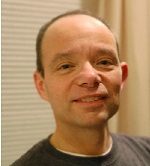*The MidWinter Meeting is held each year. The program includes both contributed paper sessions and special seminars, workshops and a short course with invited speakers on topics of current interest and importance to the ARO membership. The meeting abstracts are available to meeting attendees in digital form prior to the meeting. The abstracts are also available on the ARO website after the meeting. The ARO encourages an informal atmosphere at this meeting in order that the participants have maximal opportunity to exchange information. This informal setting is especially important for young scientists or clinicians in their attempt to learn about the broad field of scientific Otolaryngology
**Information updates in the field of Otolargyngology: ARO members are kept informed about ARO business and other topics pertinent to research in Otolaryngology through this website and through a selectied mass e-mail service to members. Members may be informed of critical issues related to research in Otolaryngology, such as pending legislation and policies of funding agencies and other issues that could have an impact on research. The ARO website includes announcements and a calendar of events related to the field of Otolaryngology, career opportunities, information on the ARO MidWinter Meeting, searchable abstracts from 1993 to the present, JARO and selected research highlights from the journal, and a resource library of related websites for educational purposes.
 Testimonial from aro past-president, Dr. matt kelley
Testimonial from aro past-president, Dr. matt kelley